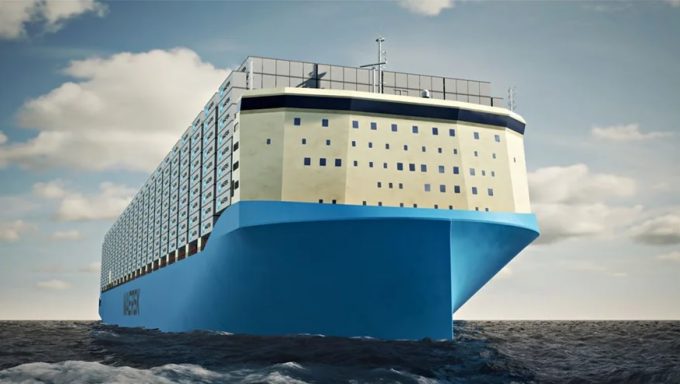Red Sea crisis forces Maersk to increase capacity over strategy limit
Maersk Line appears to have temporarily abandoned its strategy of maintaining capacity at no more ...

Maritime veterans do not appear to think much of Maersk’s new methanol vessel design, saying the forward-situated superstructure will cause a host of problems.
Ex-ship’s captain Arjun Vikram-Singh, currently CEO of Quantum BSO, said: “Thank God I’m ashore,” and called the new design a “monster”.
He added: “I hate to think of the poor souls who will sail on these ships. I wonder if any thought has been given to their comfort, let alone ‘small’ aspects of bridge management.”
Mr Vikram-Singh took issue ...
Maersk u-turn as port congestion increases across Northern Europe
Apple logistics chief Gal Dayan quits to join forwarding group
Maersk Air Cargo sees volumes fall as it aims for 'margin in favour of revenue'
Airlines slash freighter capacity post-de minimis, but 'the worst is yet to come'
Houthis tell Trump they will end attacks on Red Sea shipping
Transpac rates hold firm as capacity is diverted to Asia-Europe lanes
MSC revamps east-west network as alliance strategies on blanking vary
India-Pakistan 'tit-for-tat' cargo ban sparks sudden supply chain shocks

Comment on this article
Martyn Benson
January 14, 2022 at 2:48 pmWho says there will be any crew on board? Maybe Maersk is planning for these vessels to be autonomous – nothing would surprise me.
sunrit rustagi
January 14, 2022 at 3:29 pmI can only agree with the fact that the forward accommodation exposed to the weather coupled with the movement of the vessel is the worst place to be even in slight swell, let alone in heavy weather!
Paul Benecki
January 14, 2022 at 7:52 pmThis design is only novel because it’s on a vessel class that comes with high expectations for crew comfort. Virtually every offshore vessel is built this way, and many heavy-lift ships, fishing vessels and coastal cargo ships too. Are they comfortable in a storm? No – it can be like living inside a washing machine. Are there people who can do it? Yes – a subset of mariners who don’t mind seasickness serve aboard these working vessels every day. Some of them prefer the house-forward layout because of the forward visibility from the bridge.
Alex Piccinini
January 14, 2022 at 11:39 pmIt’s obvious none of the people know what living (hopefully) through a methanol fire is like
Kent Anderson
January 15, 2022 at 2:32 amLarge large ship compensates for heavy seas. For the majority of the time, the clear view forward is an advantage that outweighs the occasional discomfort from high seas.
capt robert j stein
January 16, 2022 at 8:23 pmthis vessel is future aimed. no crew, all control automatic from a distance. crew on board only at departure and arrival.